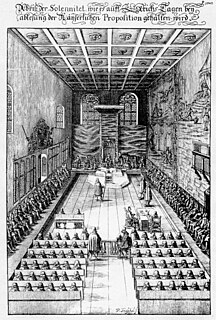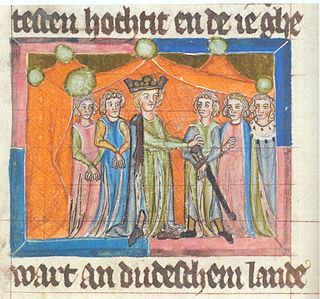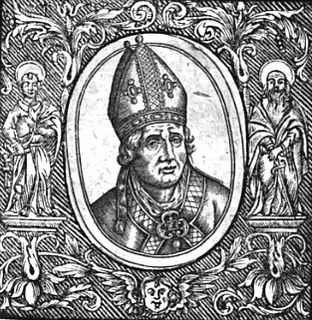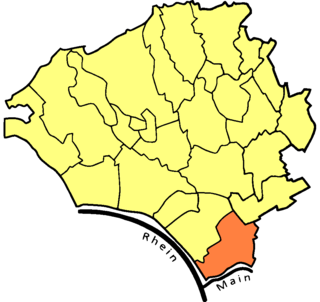The term Diet of Mainz may refer to any medieval Hoftag (high day) or early modern Reichstag (imperial diet) held in the city of Mainz. The following is an incomplete list of such diets by year and emperor:

A Hoftag was the name given to an informal and irregular assembly convened by the King of the Romans, the Holy Roman Emperor or one of the Princes of the Empire, with selected chief princes within the empire. Early scholarship also refers to these meetings as imperial diets (Reichstage), even though these gatherings were not really about the empire in general, but with matters concerning their individual rulers. In fact, the legal institution of the imperial diet appeared much later.

The Imperial Diet was the deliberative body of the Holy Roman Empire. It was not a legislative body in the contemporary sense; its members envisioned it more like a central forum where it was more important to negotiate than to decide.

Mainz is the capital and largest city of Rhineland-Palatinate, Germany. The city is located on the Rhine river at its confluence with the Main river, opposite Wiesbaden on the border with Hesse. Mainz is an independent city with a population of 206,628 (2015) and forms part of the Frankfurt Rhine-Main Metropolitan Region.
- 1098, Henry IV
- 1119, Henry V
- 1184, Frederick I
- 1188, Frederick I
- 1235, Frederick II
- 1439, Frederick III
- 1441, Frederick III

The Mainzer Hoffest or Diet of Pentecost was a Hoftag of the Holy Roman Empire started in Mainz on 20 May 1184. It was organised by Emperor Frederick I on the island of Maaraue in front of Mainz in the mouth of the Main on the occasion of Pentecost. Due to its large number of visitors and its cultural pleasures, it represented a highlight of the knightly way of life and the development of power of the dynasty of Hohenstaufen.

The Curia Christi or Curia Dei was a Hoftag of the Holy Roman Empire held in Mainz on 27 March 1188. It was so called because it was notionally under the presidency of Jesus Christ as king of kings. It was the occasion of the public resolution of the conflict between Emperor Frederick Barbarossa and Archbishop Philip of Cologne and of the emperor's "taking of the cross", when he vowed to lead an army on the Third Crusade.
| This article includes a list of related items that share the same name (or similar names). If an internal link incorrectly led you here, you may wish to change the link to point directly to the intended article. |










